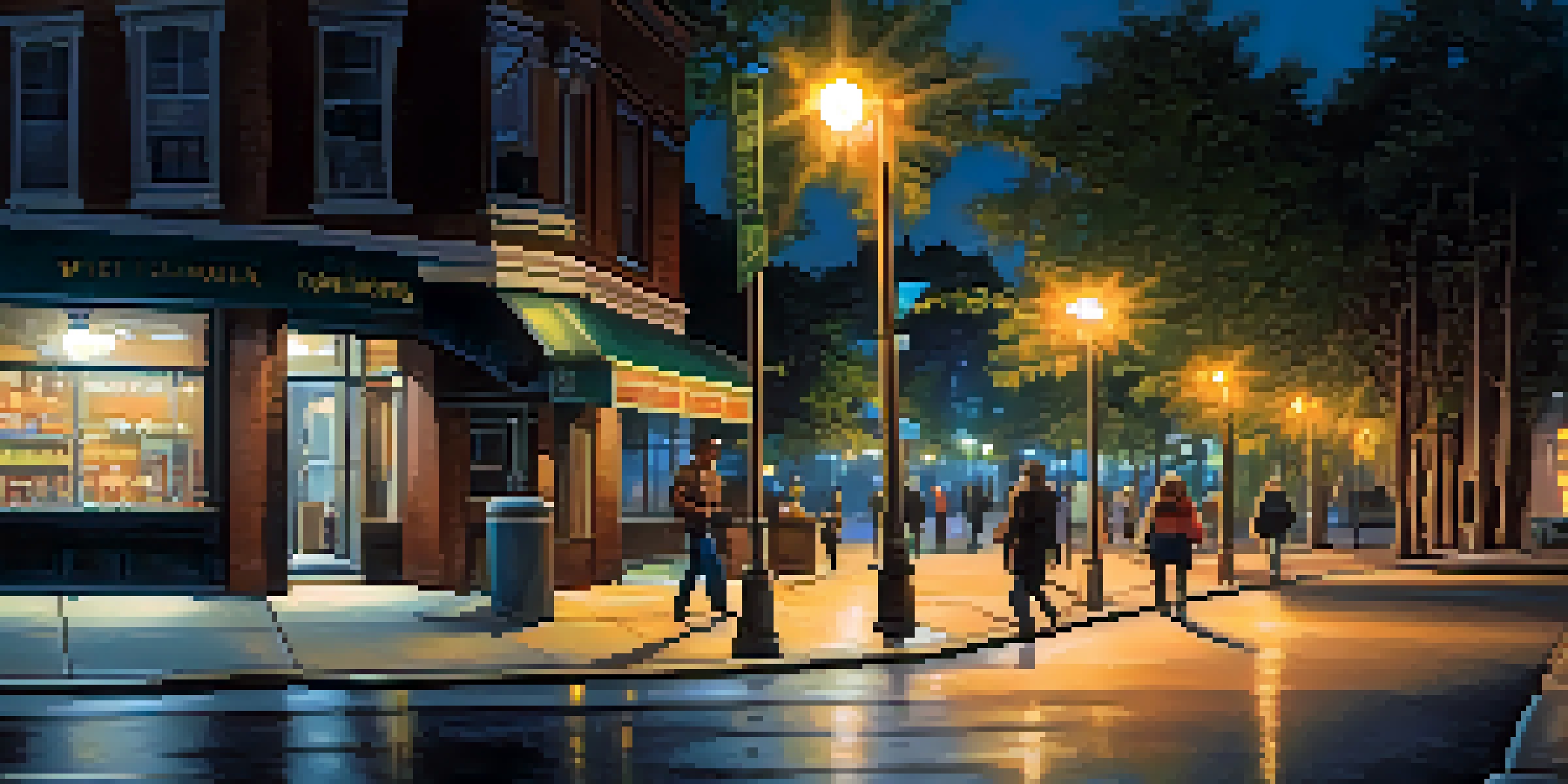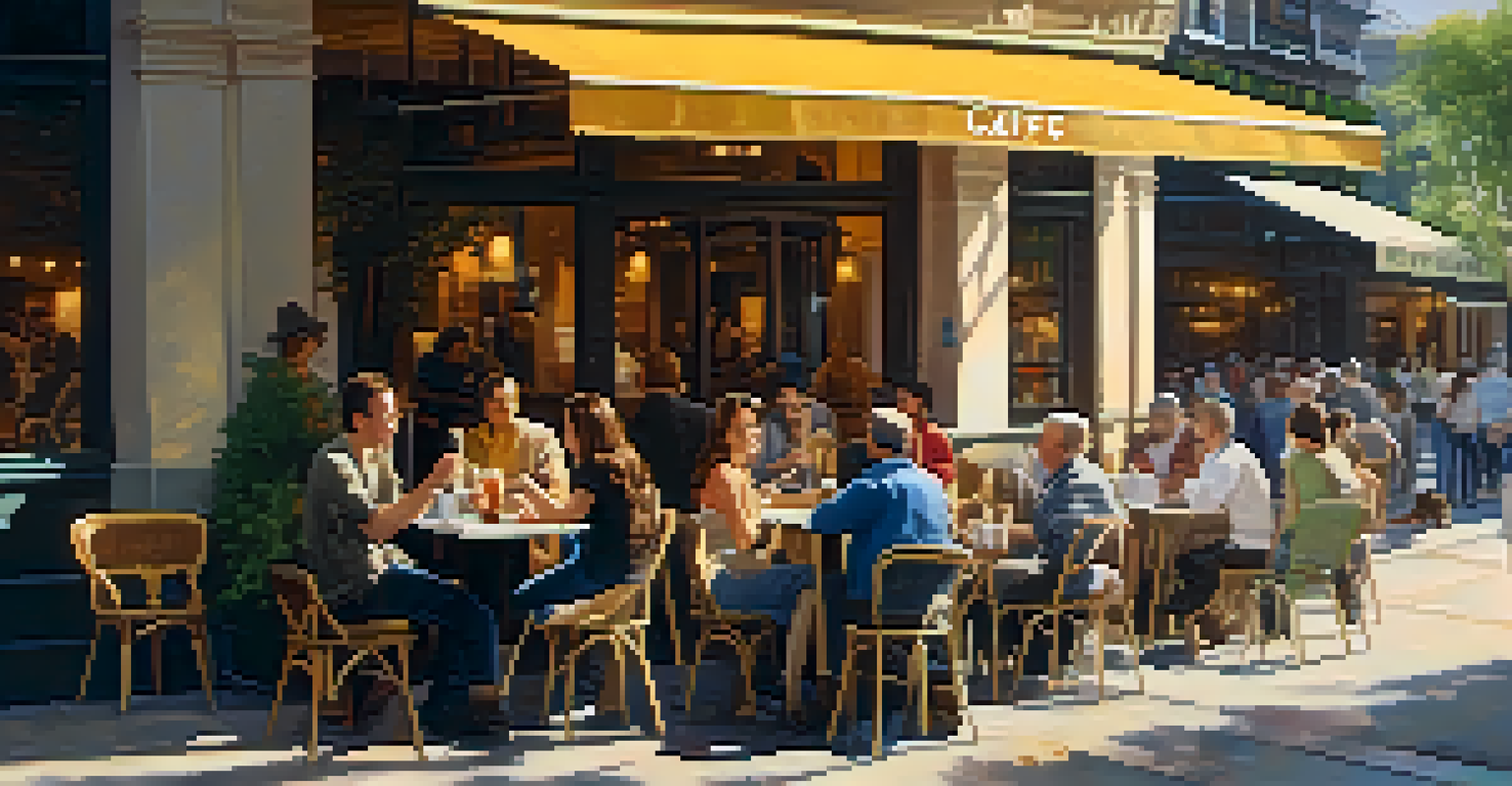The Role of Environmental Cues in Personal Safety Strategies

What Are Environmental Cues and Their Importance?
Environmental cues are the signals we receive from our surroundings that can influence our behavior and decisions. Think of them as the subtle hints that guide us through our daily lives, like a dark alley that might suggest caution or a busy street that feels safer. Understanding these cues is crucial for personal safety because they can alert us to potential dangers and help us make informed choices.
Awareness is the greatest agent for change.
For example, if you notice a group of individuals loitering in a poorly lit area, that’s a clear environmental cue to be cautious. Your brain processes these signals instinctively, allowing you to navigate situations that could be risky. By becoming more aware of these cues, you can enhance your personal safety strategies significantly.
In essence, being attuned to environmental cues equips us with the ability to assess our surroundings better. It empowers us to take proactive steps to protect ourselves, whether by avoiding certain areas or seeking help when necessary. Recognizing these cues can make a world of difference in our daily safety.
How to Read Environmental Cues Effectively
Reading environmental cues is a skill that can be developed with practice. Start by observing your surroundings more closely. For instance, notice the behaviors of people around you and how they interact with the environment. Are they hurrying? Are they avoiding eye contact? These small details can give you insights into the safety of your environment.

Another effective way to read cues is by paying attention to your instincts. If something feels off, it probably is. This gut feeling often stems from our subconscious picking up on environmental cues that we might not consciously recognize. Trusting your intuition can be a powerful tool in staying safe.
Understanding Environmental Cues
Environmental cues signal potential dangers and help us make informed choices about our safety.
Additionally, consider the context of your surroundings. A quiet park during the day may feel completely different at night. By being mindful of these shifts, you can adjust your behavior accordingly, such as choosing to leave earlier or remaining in well-lit areas. The more you practice reading these cues, the more instinctive it becomes.
The Impact of Lighting on Personal Safety
Lighting plays a pivotal role in influencing our perception of safety. Brightly lit areas tend to feel more secure, as they reduce the chances of unexpected encounters. Conversely, dimly lit spaces can create a sense of unease, making individuals more vulnerable to potential threats.
Safety isn't expensive, it's priceless.
Imagine walking down a dark street; the shadows can play tricks on your mind, heightening your anxiety. Well-lit environments not only make you feel safer but also increase your visibility to others, which can deter any ill-intentioned individuals. This is why it’s essential to choose routes that are well-lit whenever possible.
Moreover, understanding the significance of lighting can help you make informed decisions about where to go and when. If you find yourself in a poorly lit area, consider finding the nearest safe space, such as a store or a busy café. Being aware of how lighting affects your perception of safety can enhance your personal safety strategies.
The Role of Familiarity in Safety Perception
Familiarity with your environment can significantly impact your sense of safety. When you know a neighborhood well, you can identify safe spots, shortcuts, and even potential hazards. This knowledge allows you to navigate with confidence, reducing anxiety and enhancing your overall safety.
For instance, if you regularly walk through a park and are familiar with its layout, you’re more likely to notice when something feels off. This sense of familiarity can act as a protective buffer, enabling you to spot changes or unusual behaviors that might indicate danger.
Importance of Lighting for Safety
Well-lit areas enhance our sense of security and visibility, reducing vulnerability to threats.
However, it’s essential to balance familiarity with vigilance. Just because a place feels safe doesn’t mean it always is. Stay alert, even in well-known areas, and keep an eye on your surroundings. This awareness can help you maintain a high level of personal safety.
Social Cues and Their Effect on Safety
Social cues, such as body language and group dynamics, can also greatly affect your safety. Observing how people interact can provide insights into the overall atmosphere of a situation. For instance, if a group seems tense or is behaving aggressively, it may be wise to steer clear, regardless of the location.
Consider the scenario of entering a crowded bar. If most patrons are engaged in friendly conversations and laughter, it likely feels safe. However, if you notice a group that appears hostile or confrontational, that’s a cue to leave promptly. Social cues can often signal potential threats that might not be immediately apparent.
Being aware of these social dynamics helps you gauge your surroundings more effectively. It’s not just about being in the right place; it’s about being around the right people. By understanding social cues, you can avoid potentially dangerous situations and enhance your personal safety.
Environmental Changes and Their Safety Implications
Environmental changes, such as construction or seasonal shifts, can significantly impact your safety. For example, a well-traveled path might become obstructed due to construction, leading to longer routes or unfamiliar areas. This change can increase your vulnerability, especially if you are unaware of the detours.
Seasonal changes also play a role; for instance, winter can bring about icy sidewalks that pose slipping hazards. Being conscious of these changes and adjusting your routes accordingly can help you maintain your safety. A simple check of the weather or local news can inform your travel plans.
Developing a Personal Safety Strategy
Creating a personal safety strategy involves recognizing hazards and adapting your behavior to navigate safely.
Additionally, always be observant of new developments in your area, as they can alter the landscape significantly. By staying updated on your environment, you can make smarter choices that prioritize your safety, ensuring you’re prepared for any unexpected changes.
Developing a Personal Safety Strategy
Creating a personal safety strategy involves synthesizing all the environmental cues you've learned about. Start by identifying potential hazards in your daily routine, such as poorly lit areas or high-traffic zones. Then, think about how to navigate these environments safely, whether by adjusting your route or traveling with a companion.
Incorporate technology into your safety strategy. For example, using apps that provide real-time updates on crime in your area can help you make informed decisions. Additionally, sharing your location with trusted friends or family can ensure someone knows where you are at all times.

Finally, practice situational awareness. This means regularly assessing your surroundings and being prepared to adapt your plan as needed. By developing a comprehensive personal safety strategy, you empower yourself to navigate your environment confidently and safely.